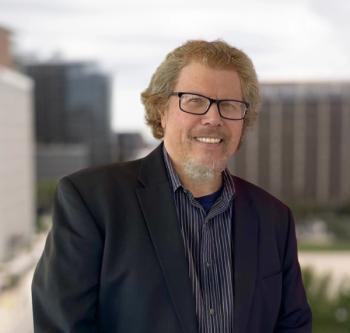
- Vol 34 No 12
- Volume 34
- Issue 12
The Best of Times, the Worst of Times: 2017
This year we asked about the best and worst things relating to our field. As always, we received a diverse group of responses.
Editor in Chief
It’s that time of year again. We polled our editorial board and our newly constituted advisory board of early career psychiatrists. This year we asked about the best and worst things relating to our field. As always, we received a diverse group of responses. While there were no transformational advances, I’m sure you’ll agree there is progress in many areas and a variety of topics that provide food for thought. Although the comments are excellent, space limitations prevent us from publishing all that we received.
THE BEST
Psychopharmacotherapy
Dr. Brian Miller selected the FDA approval of valbenazine as the most important event/development in psychiatry in 2017.1 Valbenazine is the first FDA-approved drug for the treatment of tardive dyskinesia. Several others, including Dr. Renato Alarcón, suggested the increasing study of formerly banned substances such as ketamine and psilocybin as important avenues for future medication development.
Psychotherapy
My choice for one of the most important advances this year involves the meta-analysis published several months ago in the that compared cognitive behavioral therapy (CBT) with psychodynamic therapy outcomes.2 The article reports that treatment outcomes for depression are similar between CBT and psychodynamic therapies. Given the assertions in recent years by CBT researchers that its effectiveness is the most highly substantiated by research studies, this publication’s conclusions come as welcome news for practitioners of psychodynamic therapies.3
Digital psychiatry
Dr. John Torous told us, “One of the ‘best’ things we are seeing is evidence and research beginning to catch up with digital mental health. While there is still much out there that we do not know, we are now beginning to see real data that are helping us begin to actually evaluate apps on their merits vs marketing claims.”
Along the same line of innovation, Dr. Awais Aftab chooses the FDA announcement that it would permit marketing of the first mobile medical app (the reSET application, Pear Therapeutics) for the treatment of an array of substance use disorders. The app is prescription-only and used as an adjunct to standard outpatient clinical treatment and contingency management. It is approved to treat alcohol, cocaine, marijuana, and stimulant substance use disorders, but not opioid use disorder. Its approval was based on data from a multi-site 12-week clinical trial of almost 400 patients, in which app users showed a significant increase in adherence to abstinence. This is likely a harbinger of the future role of digital innovations and applications in psychiatric care.
Dr. Alarc ón also emphasizes the increasing use of telepsychiatry as a way to reach out to communities deprived of specialized mental health resources.
New research funding
Dr. Peter Buckley highlights this year’s passage of the NIH BRAIN initiative. Not only will this endeavor bring new funding for research to better understand the brain, but it will foster increased interdisciplinary research crucial to important advances.
Addressing physician burnout
Although psychiatrists report experiencing burnout at rates much lower than the majority of medical specialties, the reported rate is still more than 40%. Dr. Steve Moffic asserts that the increasing epidemic of burnout among psychiatrists and other physicians is one of the most important challenges facing our field. The emergence of organizational concern for this epidemic, including from the American Psychiatric Association, is hailed by him as one of the best things that happened this year. Although other medical specialties have been trying to increase wellness and reduce burnout for many years, psychiatry has not been on the forefront.
Re-envisioning mental illness and treatment
The documentary CRAZYWISE, says Dr. Helen Lavretsky, invites us to re-think how we see and approach “mental illness” in Western cultures.4 The film takes an anthropological approach to understanding the effects of mental illness on both the individual and society. Reminiscent of the work of Dr. R. D. Laing,5 a Scottish psychiatrist, in The Divided Self and other works, the film also explores a growing movement that believes a psychological crisis can be an opportunity for growth and transformation, not just a manifestation of a disease.
In a similar vein, Dr. Alarcón highlights the positive psychiatry movement as an evolving conceptual formulation of the nature, characteristics, and practice of our field, based on notions cultivated in psychology and the social sciences. While this term was coined several years ago, Dr. Alarcón sees 2017 as a nodal point (ie, its inclusion in the medical school curriculum and residency training programs, and its acceptance as part of the natural role of psychiatry and psychiatrists) that entails going beyond purely clinical foci to embrace preventive, educational, and public health models as part of our permanent armamentarium. While many psychiatrists would argue these aspects have always been a part of the ideal view of psychiatry’s mission and approach, Dr. Alarcón sees that the positive psychiatry movement is of particular benefit in so-called special populations-those who are often neglected or set aside by a routine-based practice style.6
Appointment of a psychiatrist to a high government post
On Dr. Phil Muskin’s “best” list for this year is the appointment of psychiatrist Elinore F. McCance-Katz, MD, PhD, to the newly created post of Assistant Secretary for Mental Health and Substance Use at SAMHSA. Dr. McCance-Katz reports directly to the Secretary of Health and Human Services, and thus becomes what is arguably the most influential person in the federal government regarding mental health. Dr. Muskin especially lauds the fact that she is a skilled psychiatrist who is not simply, like many other recent high-level federal administrators, an inexperienced political appointee, but brings many years of experience as a psychiatrist, especially with substance abuse, to the federal government.
Societal changes and mental health implications
At a time when human migration due to primarily manmade disasters is at an all-time high, Dr. Alarcón reminds us that just as societal disruptions, such as the ongoing Syrian war and the more recent forced migration of over 500,000 religious minority Rohingya people from Myanmar, cause mental distress, positive societal change, such as has occurred in his home country of Peru in 2017, can also have ameliorative mental health effects. He writes:
The way in which countries and people handle the painful memories of collective, socio-political conflicts of the relatively recent past, and obviously their mental health sequelae, has received constructive, even inspiring examples from 2 Latin American countries. Colombia has officially ended more than 5 decades of war between the government, 2 guerrilla organizations, and several so-called paramilitary groups that caused more than 260,000 deaths: during that conflict, 25,000 disappeared, almost 7 million were internally displaced, hundreds of thousands left the country, property was lost, families disintegrated, and devastating individual and collective emotional dramas were endured. By publicly renouncing the use of weapons, apologizing, and asking to be forgiven in the presence of the Pope, making what seem politically mature decisions, former guerrilla leaders and soldiers, military commanders, and politicians seem to be ready to start a new era in the country’s history.
In Peru, September marked the 25th anniversary of the capture of the leader of Shining Path (Sendero Luminoso), the sanguinary Maoist-oriented guerrilla group that declared war on the government in the mid-1970s and led bloody hostilities for almost 2 decades, causing close to 80,000 deaths and desaparecidos, and almost 600,000 displaced people. During the commemorations, the public debate and reflections about the war (exemplified by 4 books on the subject, a powerful film about the capture, editorial comments in different publications, and passionate pronouncements in the media and social networks) have shown a sober sense of analysis, objective consideration of the facts, their implications, and meaning in the present and for the future of a country successfully attempting to maintain political stability and solid economic development. The message for future generations, those who did not live the bloody realities of the war, is challenging but promising. And with it, the mental health of more than 30 million people (Peru’s current population) can also embrace hope and provide inspiration for other world regions entrapped in similar civil conflagrations.
THE WORST
War, mass murder, government inaction, and corporate discrimination
A number of our board members mentioned the adverse effects of global disasters, both natural and manmade, on the mental health status of at least hundreds of thousands of people who suffer but have no access to even minimal psychiatric care. There were also comments about the increasing number of mass killings in the US, attributed by most politicians to individuals with mental illness.
To make an obvious point, all the large-scale epidemiological research across developed countries shows only a modest variation in the incidence of major psychiatric disorders. Yet, we know the US by far has the highest incidence of mass shootings. Thus, it makes little sense to attribute our problem to mental illness. The ubiquity of guns and their availability in the US is another much more obvious difference in our country, and it has little to do with illness prevalence or available treatment.
Another source of dismay was the lack of national action to reduce the incidence of suicide, or to address the ongoing epidemic of opiate addiction. The designation of the opiate addiction epidemic as a public health emergency has little meaning when the government makes no changes in response. Furthermore, the recent revelations about the role of a recent nominee for a high-level health appointment in the federal government in blocking legal redress against what should be illegal distribution of opiates by pharmaceutical companies tells us everything we need to know about the likelihood of government action.
Several board members noted the ongoing “outrageous behavior by insurance companies such as UHC” regarding discriminatory reimbursement policies for psychiatric treatment. One contributor wrote that in his location, “They continue to deny care to psychiatric patients, contending that psychotherapy is ‘not medically necessary.’” Policies like this ensure that those companies stay on our “worst” list every year.
Psychiatric ethics and ketamine
The role of ketamine in current practice makes both our “best” and “worst” lists this year. Dr. Cynthia Geppert writes:
My choice is the rapid proliferation of ketamine clinics for depression. Readers of the psychiatric literature including Psychiatric Times are well-aware of the promising results of clinical research into the use of ketamine for depression, as well as the continued scientific hurdles that must be overcome for ketamine to fulfill its promise as a safe, effective, and widely accessible psychopharmacological intervention. These clinics were one factor contributing to a recent consensus statement on the use of ketamine in the treatment of mood disorders.7
But what some readers may not know is how these clinics have capitalized on the enormous and desperate hope of many patients with severe and refractory mood disorders that have not responded to established therapies. Or that it is anesthesiologists-not psychiatrists-who run and staff many of these clinics, often with a psychologist involved in treatment. Ketamine is not approved for depression, so its use is off-label. How this expansion of ketamine use will affect future research and clinical care should unexpected serious adverse events occur is at best uncertain and at worst an ethical concern to the profession.
We’d like to hear about your reactions to our editorial board’s list and your own thoughts about the best and worst in 2017.
References:
1. Tasman A. Tardive dyskinesia: finally some good news. Psychiatric Times. May 2017.
2. Steinert C, Munder T, Rabung S, et al. Psychodynamic therapy” as efficacious as other empirically supported treatments? A meta-analysis testing equivalence of outcomes. Am J Psychiatry. 2017; 10:943-953.
3. Tasman A. You are always on my mind. Psychiatric Times. November 2017;34:11-12.
4.CRAZYWISE.
5. Laing RD. The Divided Self. New York: Penguin Psychology; 1965.
6. Alarcón RD. Positive psychiatry: an interview with Dilip V. Jeste, MD. Psychiatric Times. February 2016.
7. Sanacora G, Frye MA, McDonald W, et al, for the American Psychiatric Association (APA) Council of Research Task Force on Novel Biomarkers and Treatments. A consensus statement on the use of ketamine in the treatment of mood disorders. JAMA Psychiatry. 2017;74:399-405.
Articles in this issue
about 8 years ago
Technological Ventures Offer New Hope for the Future of Psychiatryabout 8 years ago
Telepsychiatry-Based Culturally Sensitive Collaborative Treatmentabout 8 years ago
Introduction: Innovations to Improve Mental Health Outcomesabout 8 years ago
Leveraging Smartphones in Patient Careabout 8 years ago
THE QUIZ/Fibromyalgiaabout 8 years ago
Measuring Up on Mental Health?about 8 years ago
The Best and Not So Great Articles of 2017about 8 years ago
Stress, Neural Plasticity, and Major Depressionabout 8 years ago
Wound Healingabout 8 years ago
Strategies and Solutions for Switching Antidepressant MedicationsNewsletter
Receive trusted psychiatric news, expert analysis, and clinical insights — subscribe today to support your practice and your patients.

















